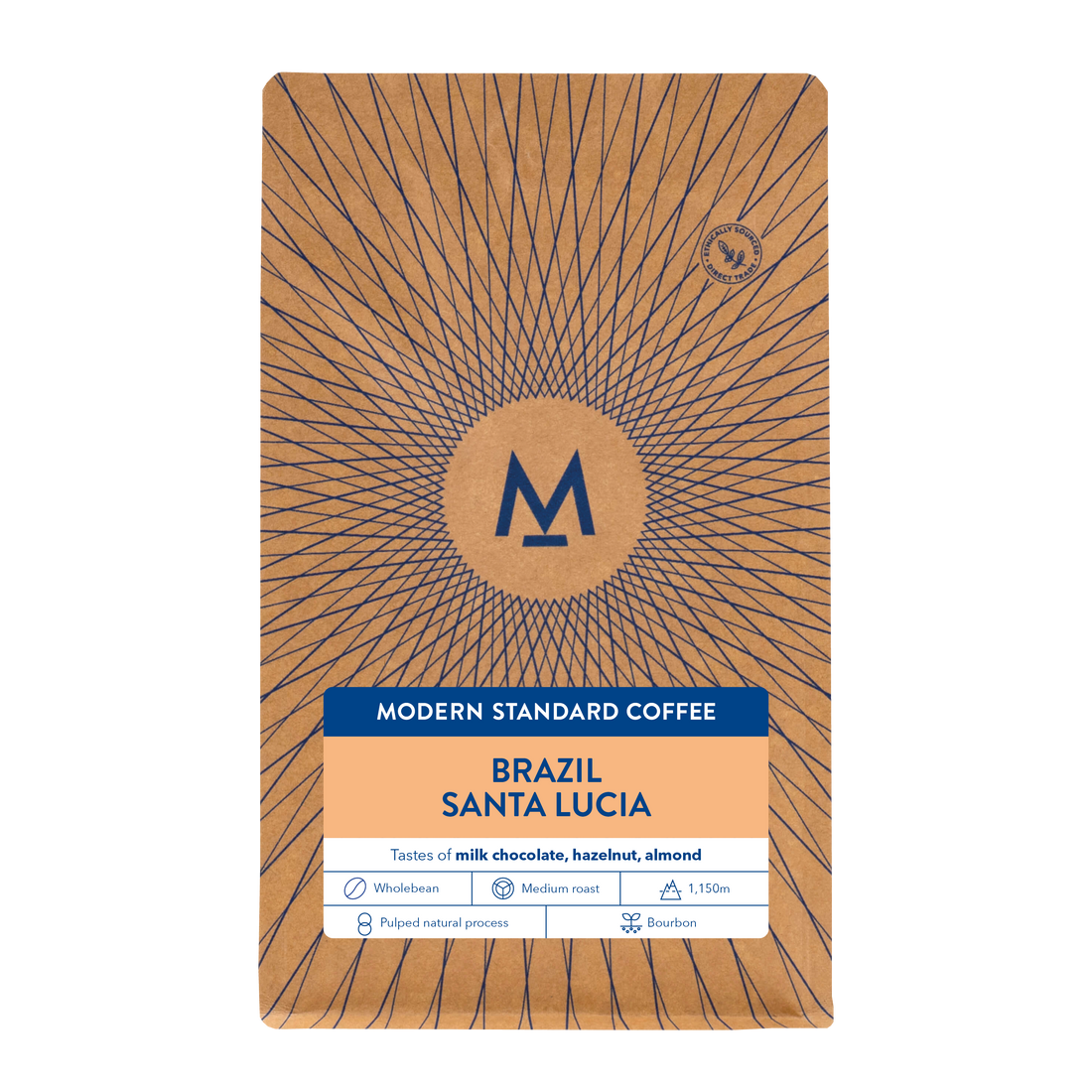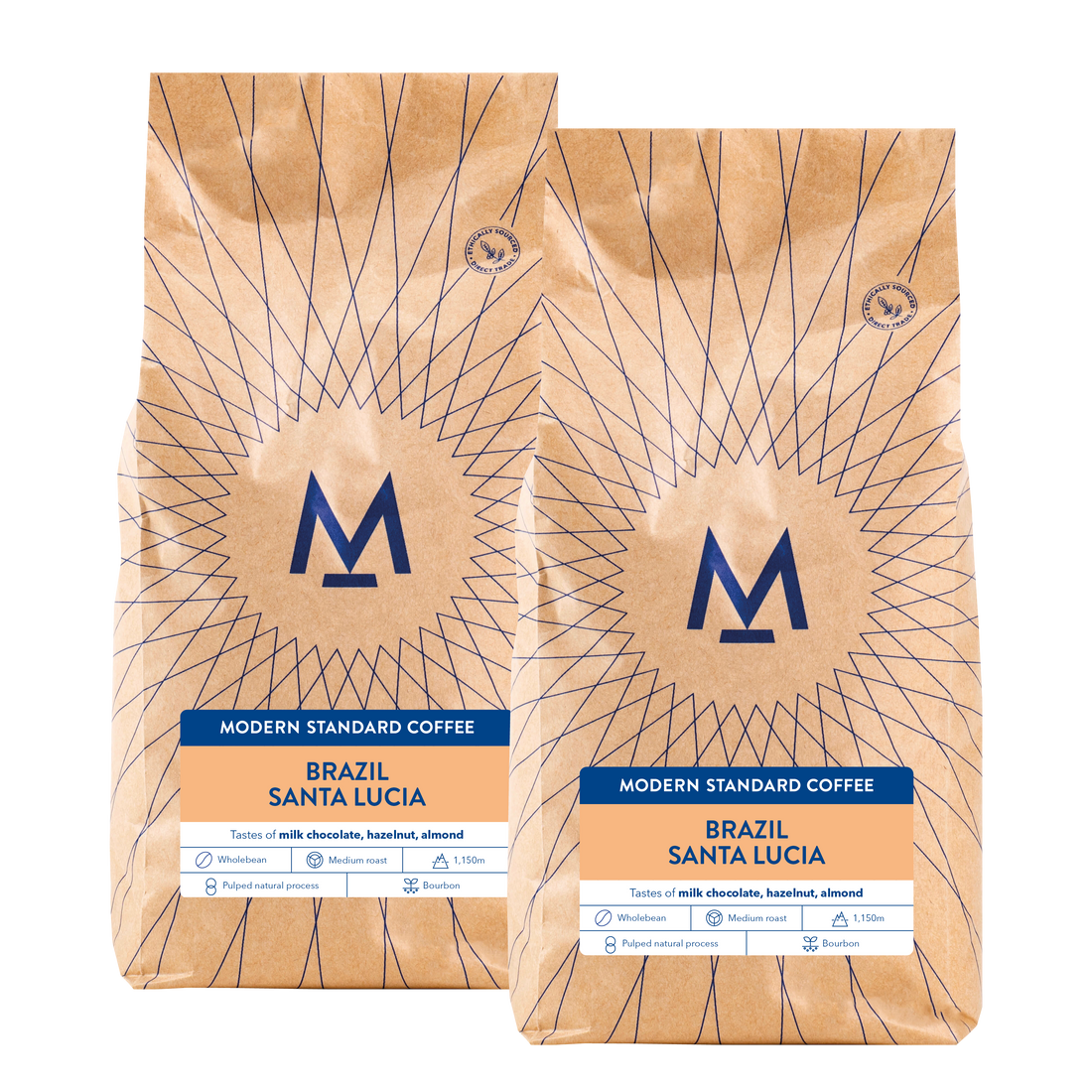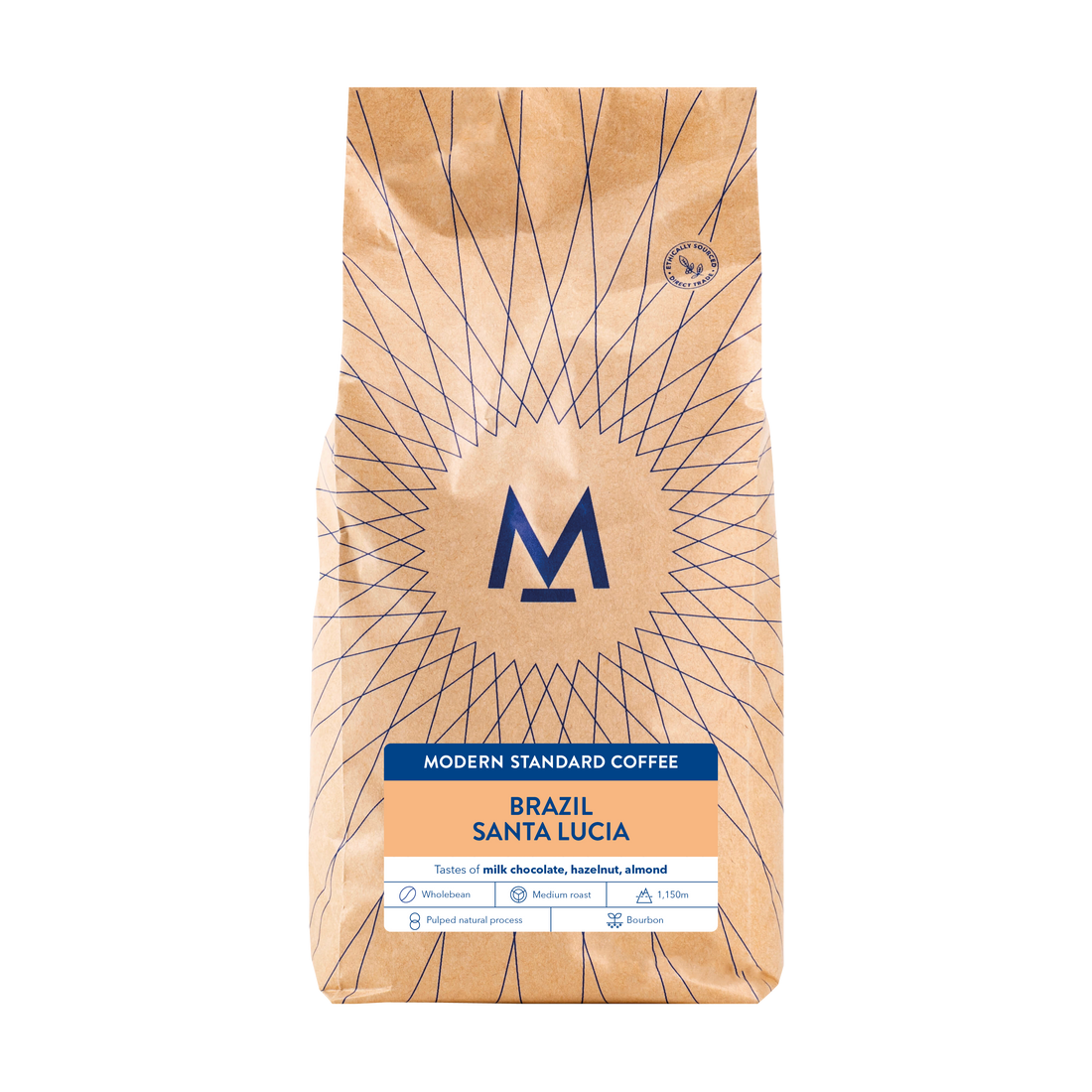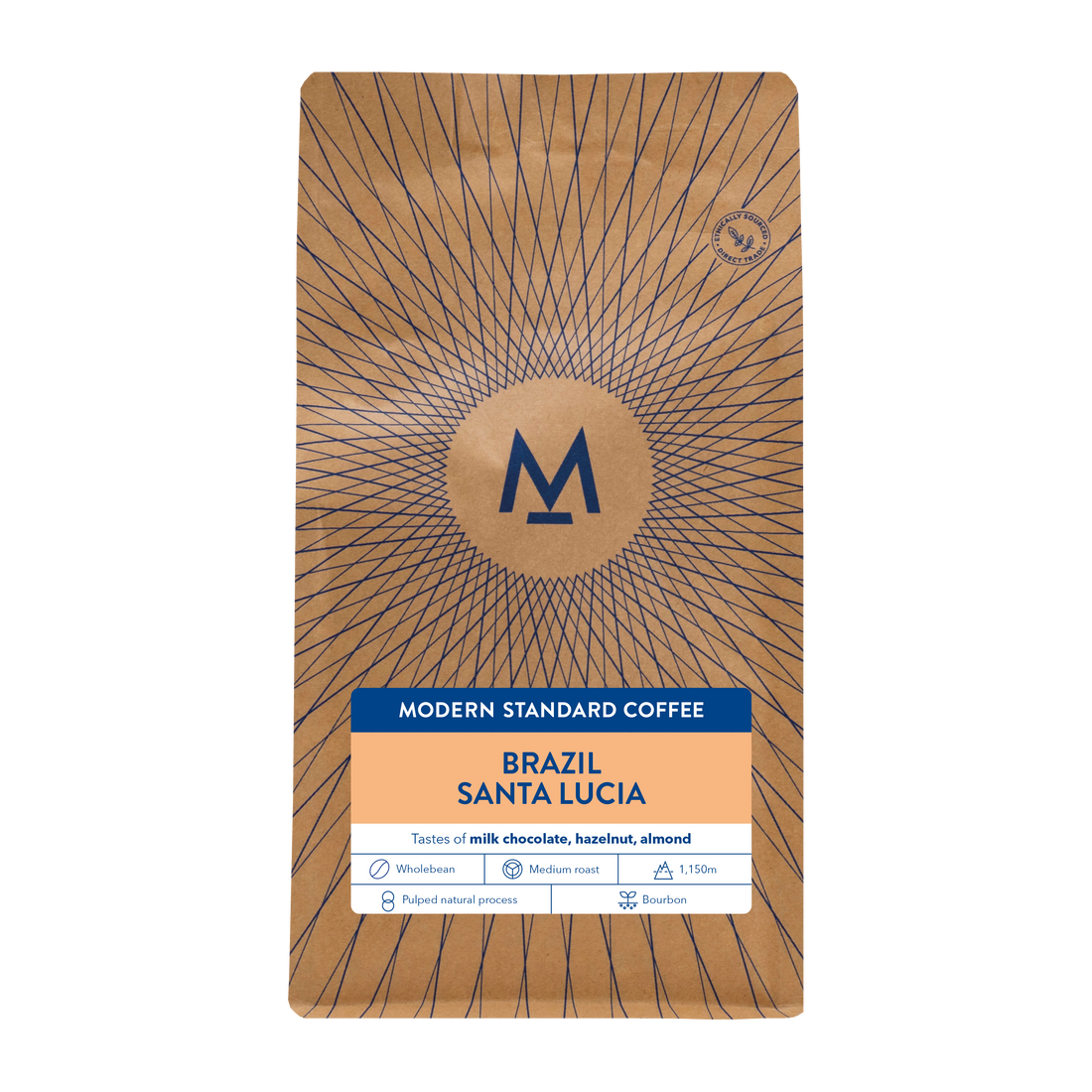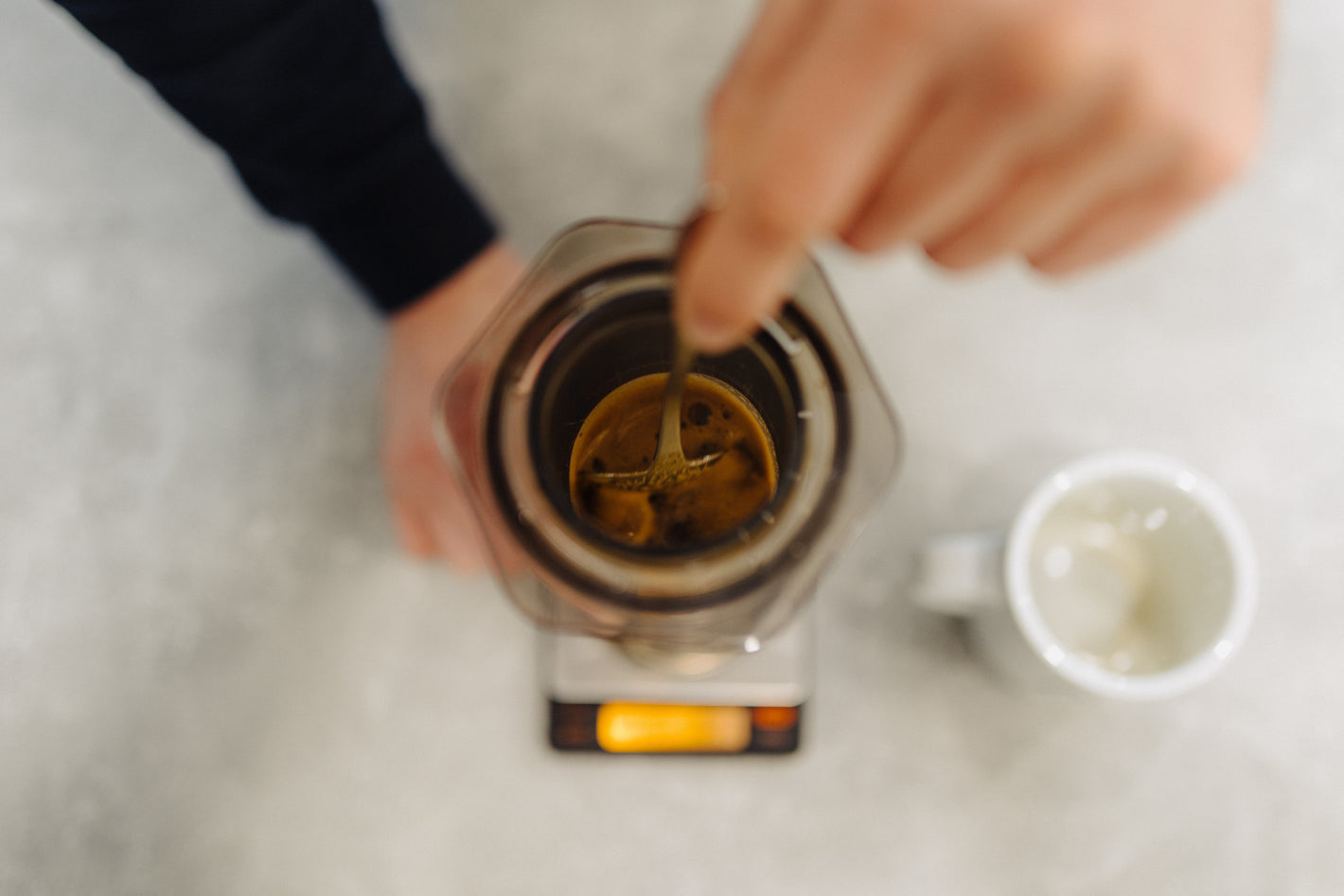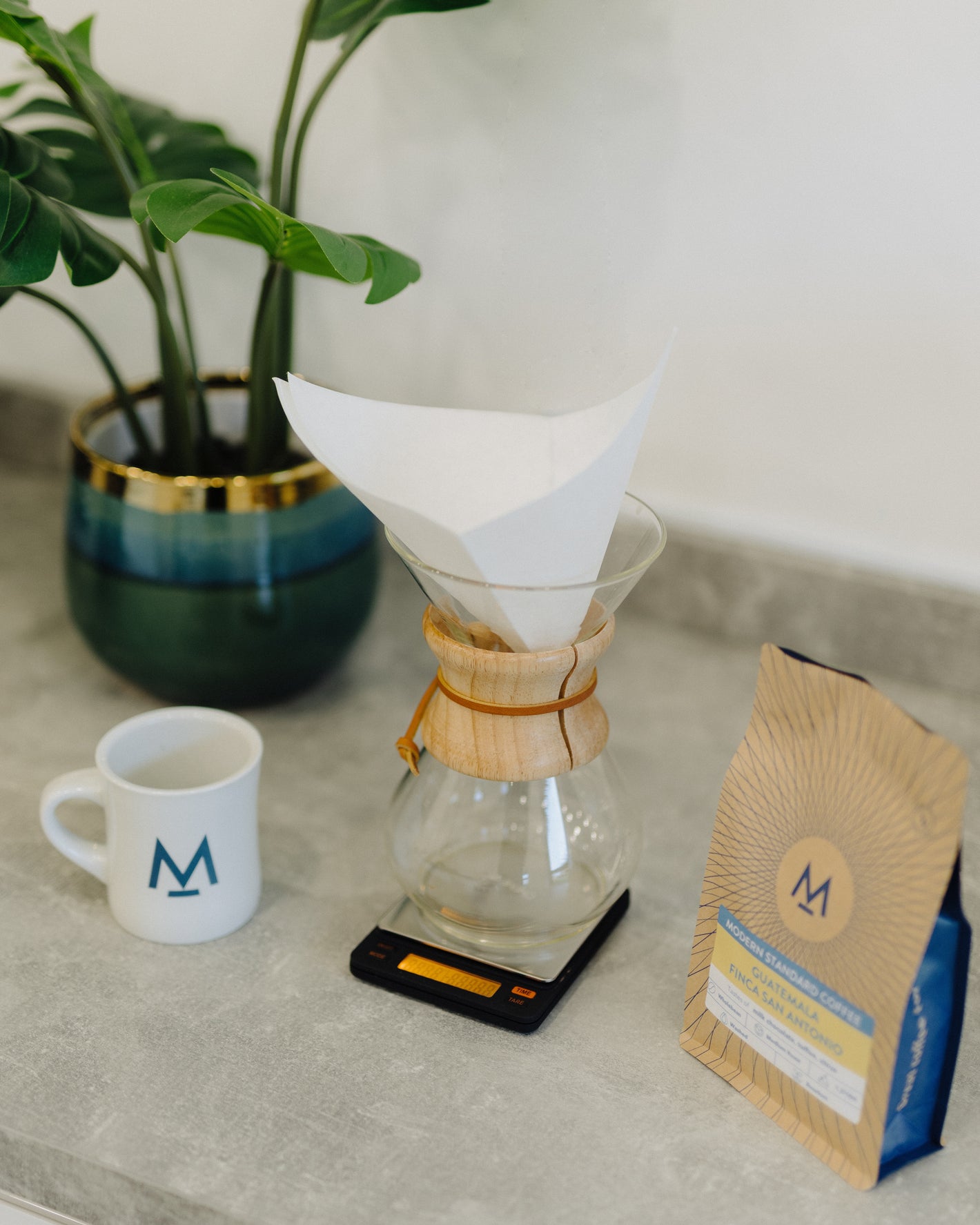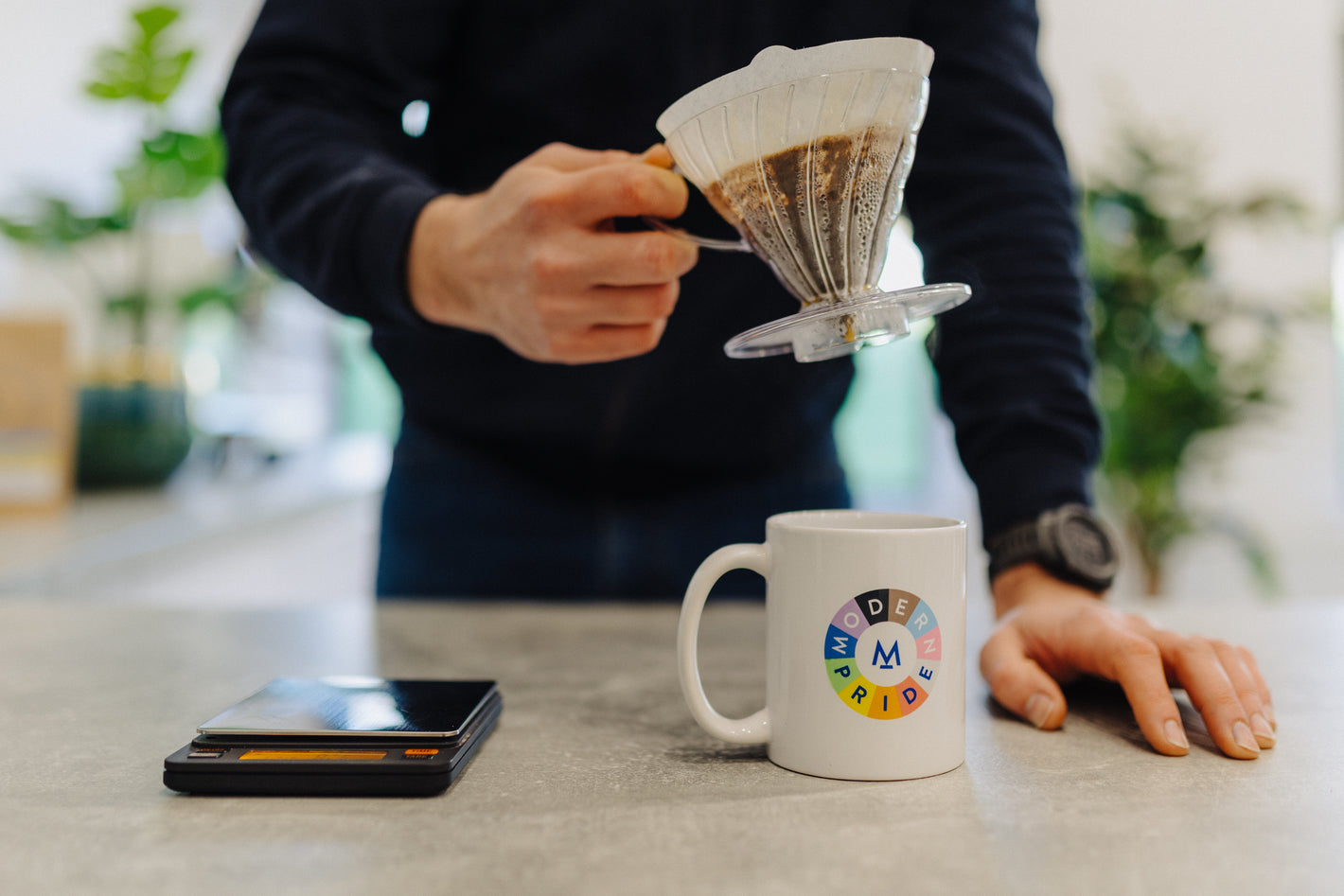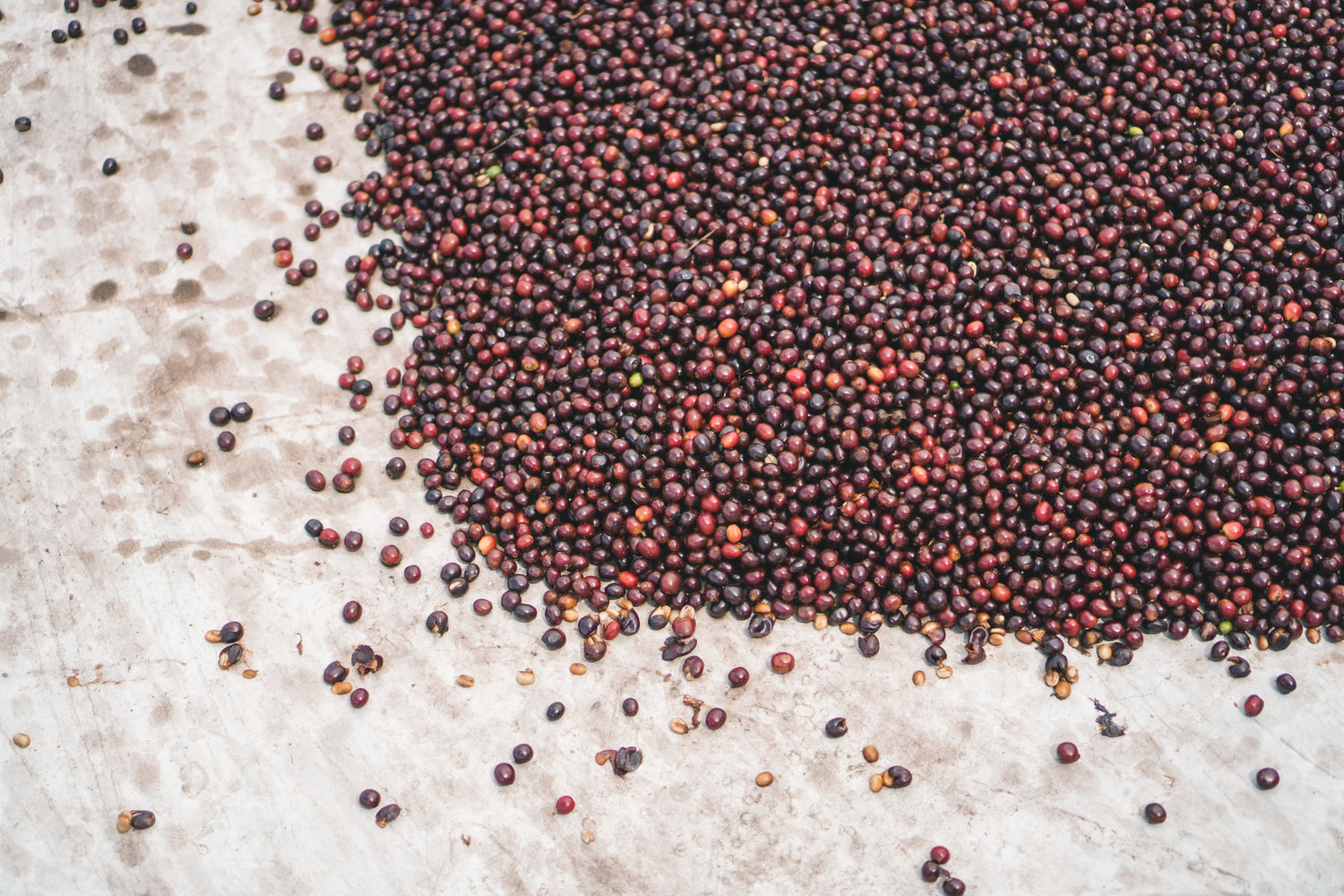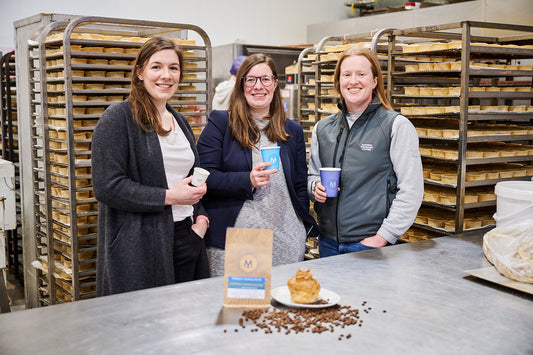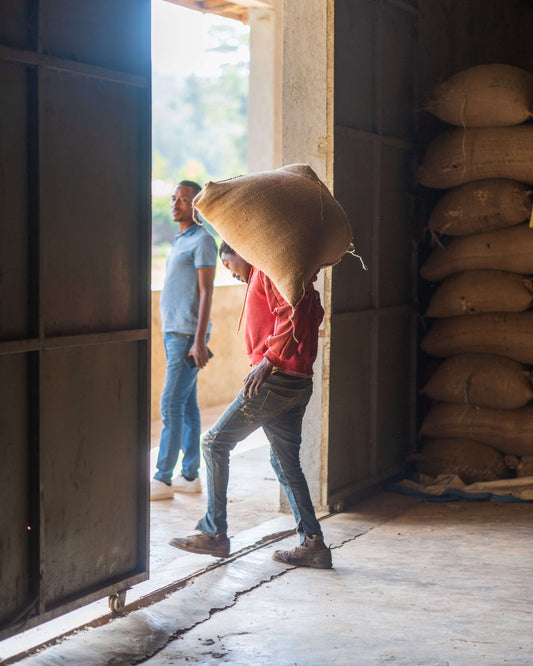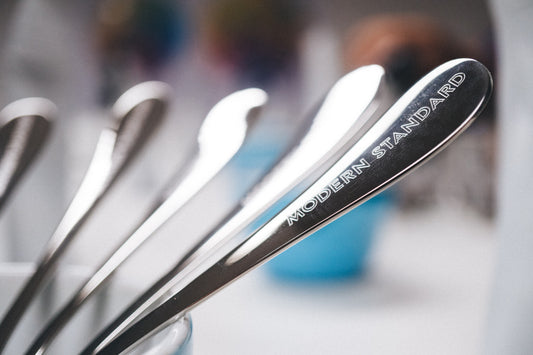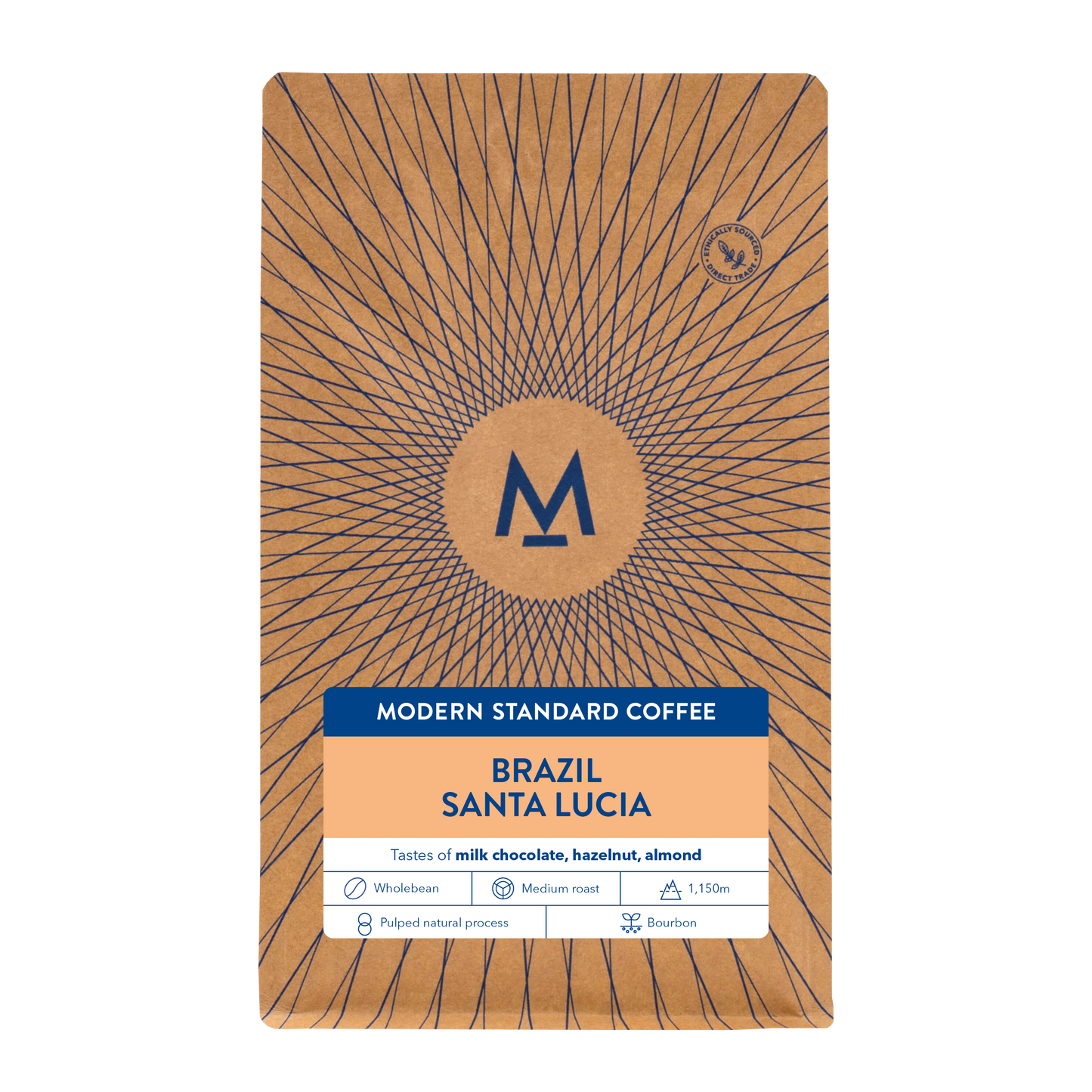
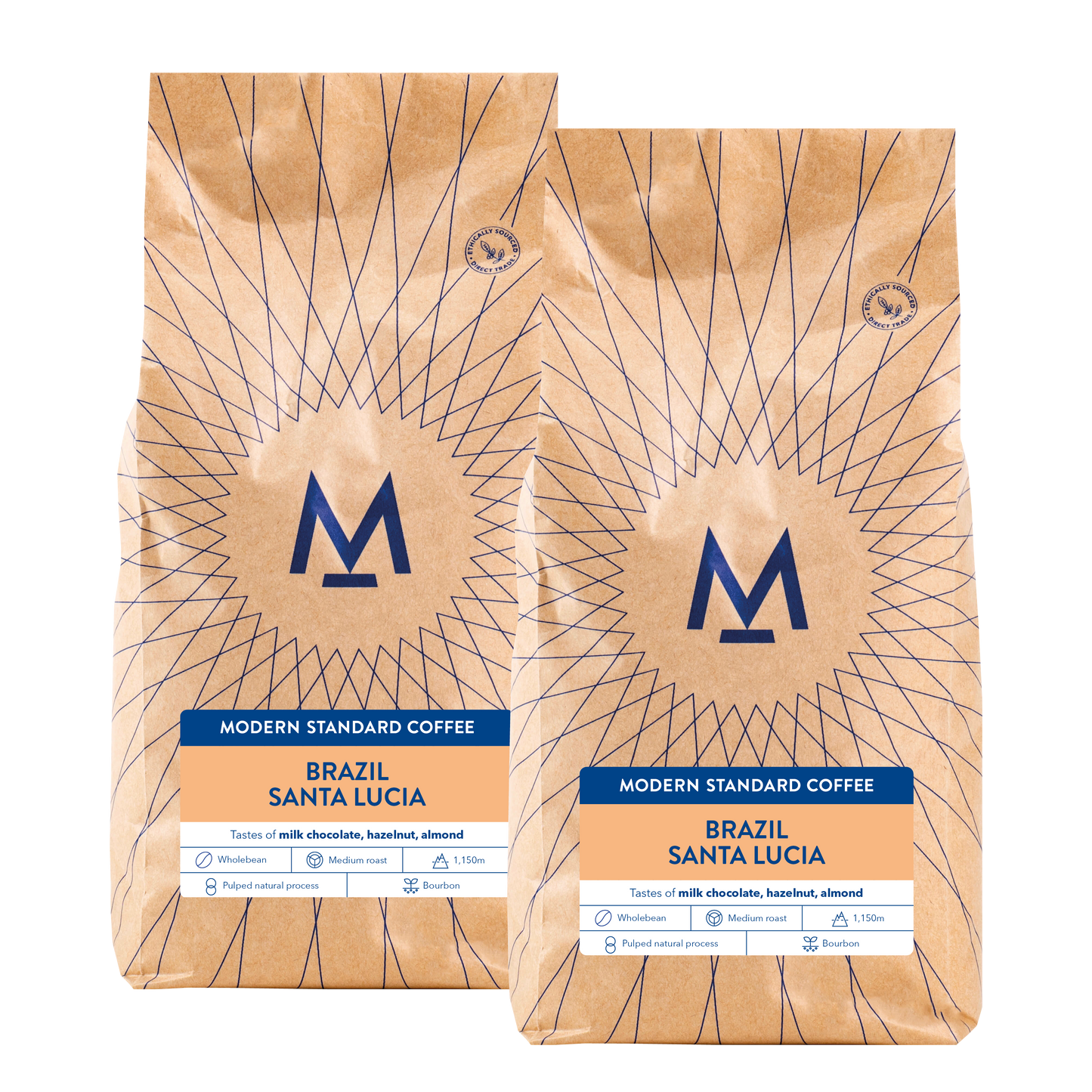
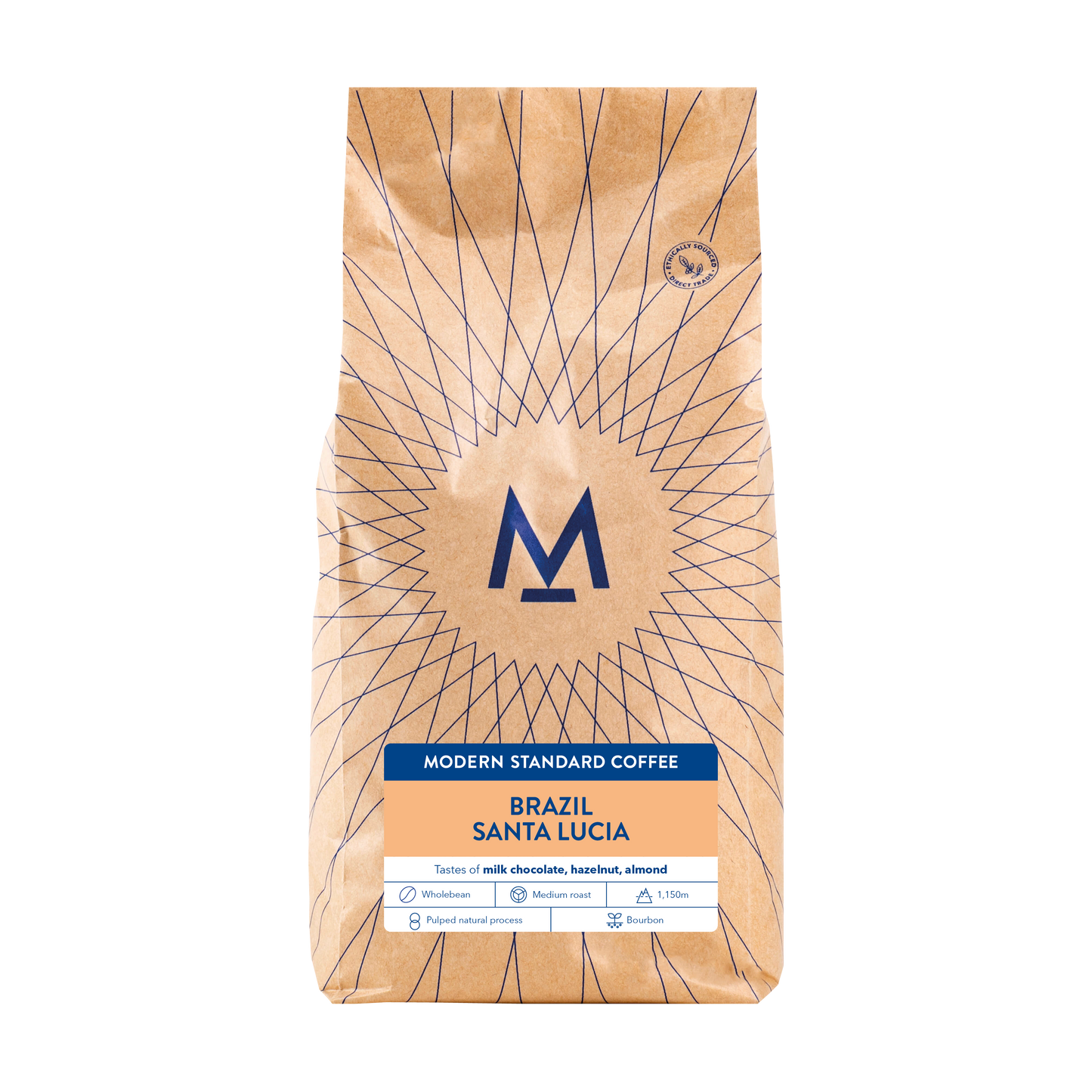
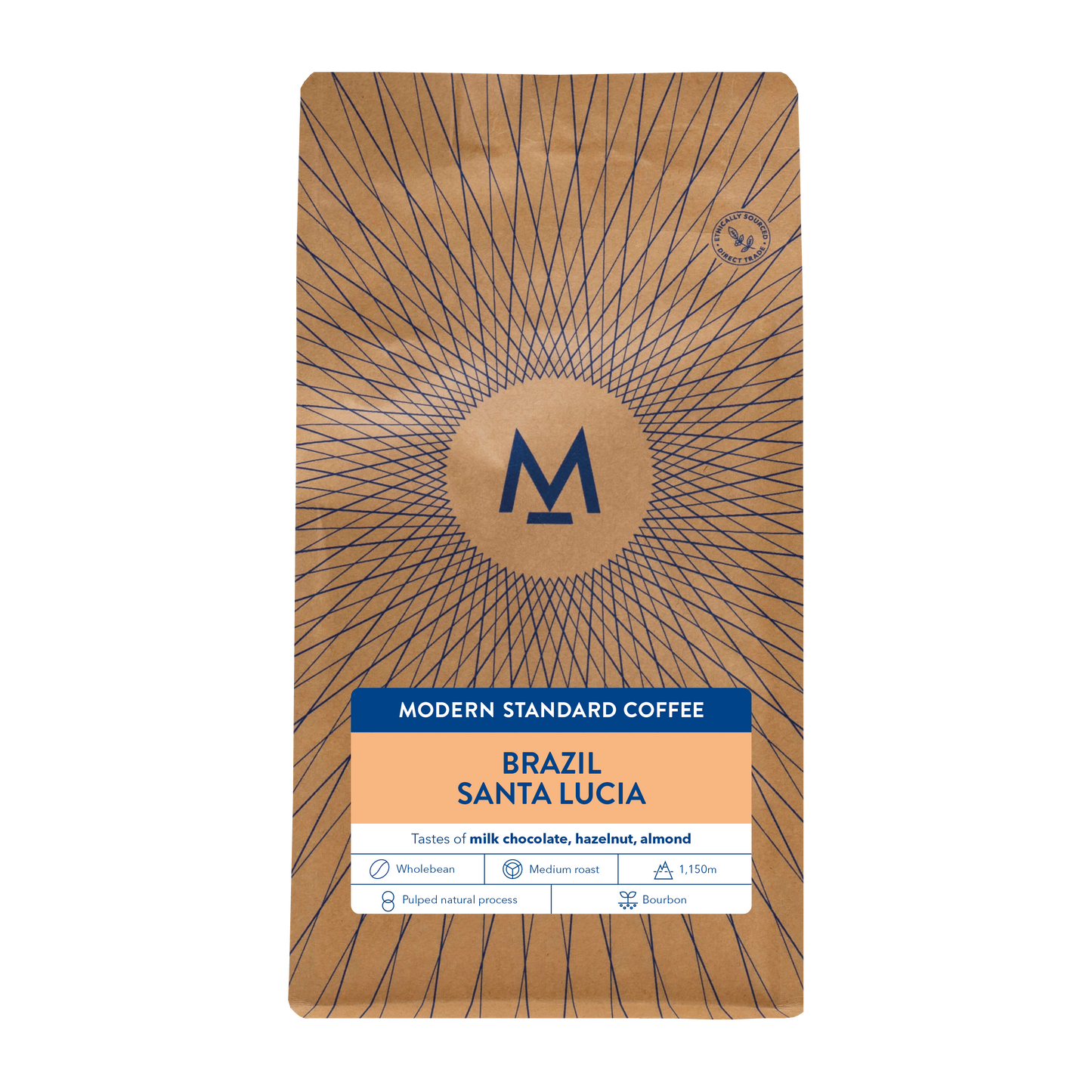
The overview
| Countries of origin | Brazil |
| Producer | Garcia Family |
| Altitude | 900 - 1100m |
| Varietal | Bourbon |
| Process | Pulped Natural |
The producer
Located in the region of Sul De Minas, Fazenda Santa Lucia is perfectly situated to grow coffee in Brazil. The 123 hectare farm has been in the Garcia Family since 1994. The Family has a history of three generations of coffee producers, initially beginning with Alexandre Garcia Capelo who inspired his son Antonio Wander Garcia to follow in his footsteps and farm coffee, studying agricultural engineering and researching plant reproduction and plant nutrition in the process.
The coffee
Fazenda Santa Lucia has 11 permanent employees who have each worked on the farm for over 20 years. Each year the employees will also receive a 10% premium bonus at the end of the harvest, once when coffee is sold as 'specialty grade'. During harvest the coffee is manually collected when the cherry reaches maturation, a process that carries on until a point is reached where the majority of cherries may become over ripe. At that point a mechanical harvester is used to strip pick the coffee to ensure a maximum yield. Once picked, the coffee is laid out on patios and turned every hour until 50% moisture is reached. The coffee is then collected in thicker piles to allow it to dry down to 11.5%. The process can last up to 21 days. Once dried, it is then stored in wooden hoppers for 20 days to rest and equalise before being hulled and bagged ready for shipment.
Why we love it
I've only recently started drinking coffee, and this is one of my favourites so far. I like the family story behind the farm too, makes you feel connected to the growers.
Scott's Brew Guide
Out: 31-33g
Time: 24-26s
Water: 305g
Ratio: 1:17

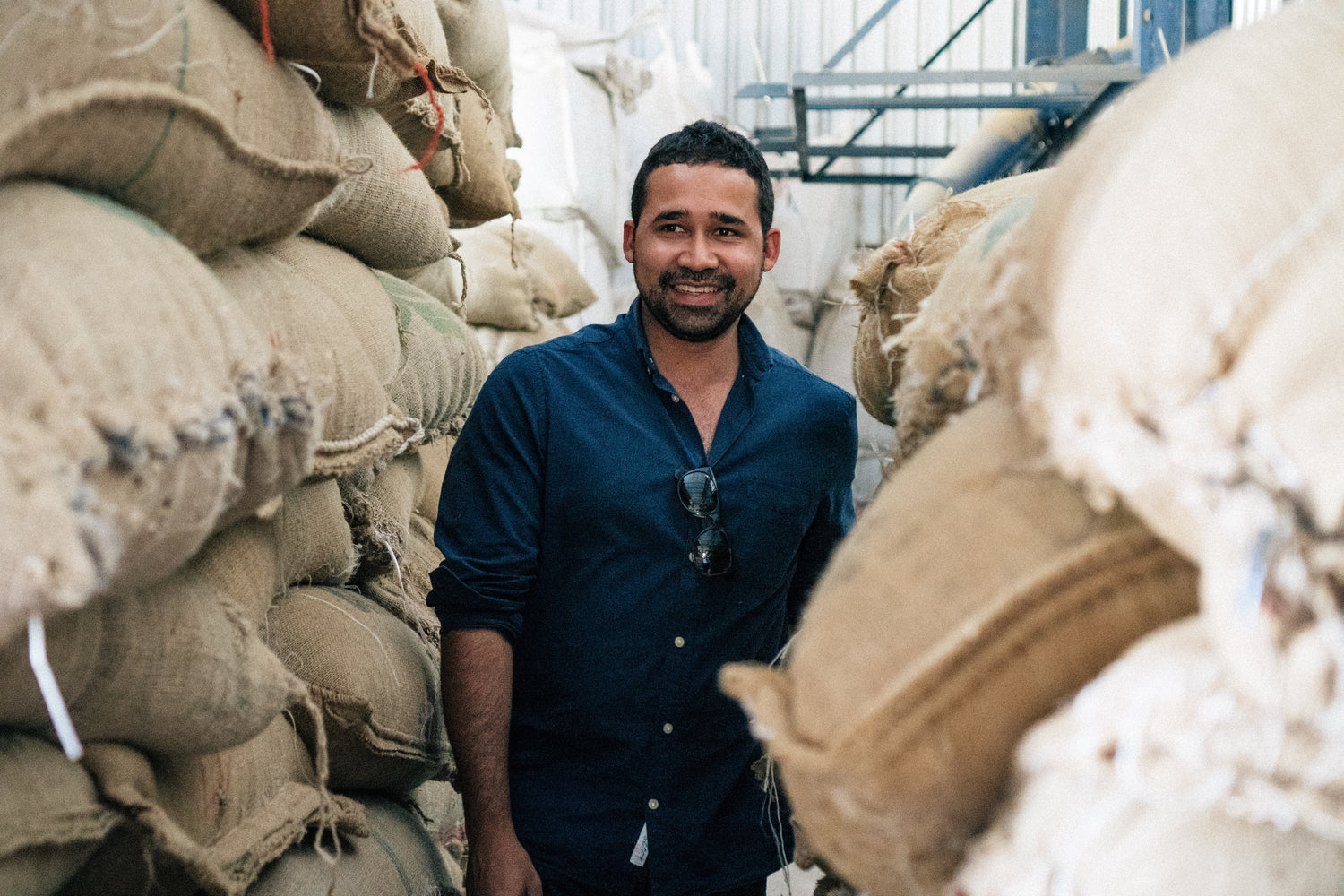
Garcia Familia
This family tradition has followed onto Antonio’s son, André Luiz Alvarenga Garcia, who also studied agricultural engineering like his father, with a focus on pruning and production. With this knowledge they now work together on Fazenda Santa Lucia with detailed care and attention to create the best growing environment for their coffee trees. They have implemented the use of more organic fertilisers as well as reducing the volume of agrochemicals they use. Since taking over the farm they have also implemented the planting of native fruit trees each year as well as bracharia (a type of grass) and banana plants in between the rows of coffee plants to help maintain the health of the soils and prevent erosion. The farm also uses the practise of cyclical pruning on a 2 or 4 year rotation, depending on the climate and the structural condition of the plant. This helps to strengthen the plant and reduces its susceptibility to disease.
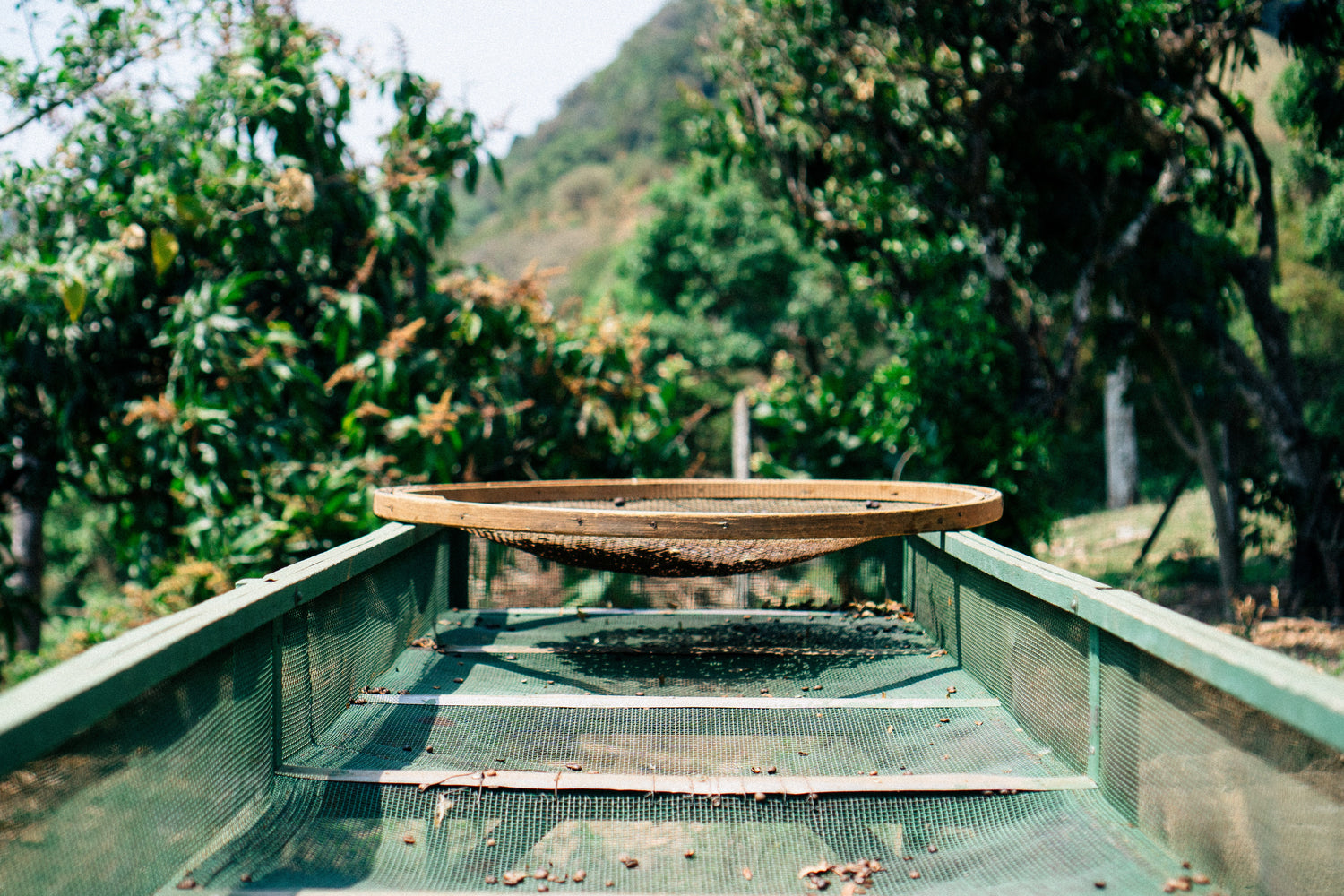
History of Brazilian coffee
The story of how coffee was first introduced to Brazil is one of subterfuge, seduction and intrigue. In 1727, Francisco de Melo Palheta, a Lieutenant-Colonel in the Brazilian army, was commissioned by the Portuguese government (who ruled Brazil at the time) to steal coffee from the French, who had several nearby colonized-countries growing coffee (and had refused to share).
When Brazil was asked to intervene in a border dispute in French Guiana, a country that borders the northern Brazilian state of Amapa, Palheta was sent to deal with the dispute….and steal a viable coffee seed!
After Palheta successfully arbitrated the dispute, he asked the colonial Governor of Cayenne for a sample of the governor’s coveted coffee plant. The governor refused, seeking to maintain the monopoly France had on coffee plants in the Americas. Palheta, according to legend, skirted this problem by seducing the governor’s wife.
When Palheta was set to depart French Guiana for Brazil, his paramour gifted him a bouquet of flowers that had coffee beans hidden within it. The rest, as they say, is history.
